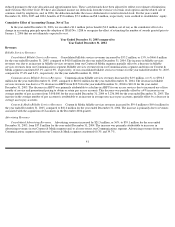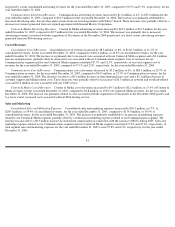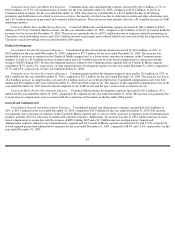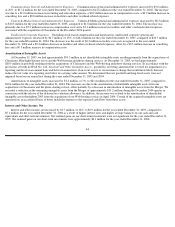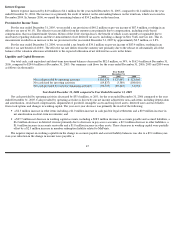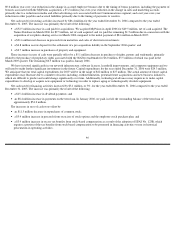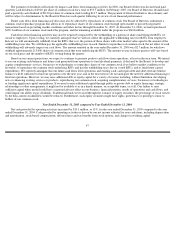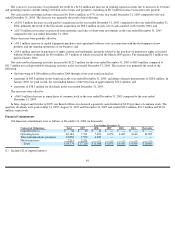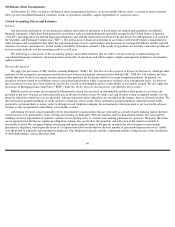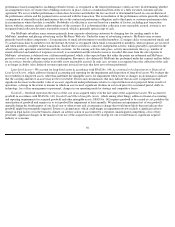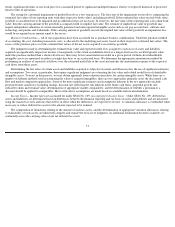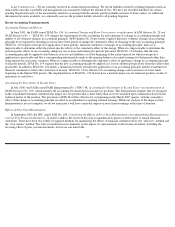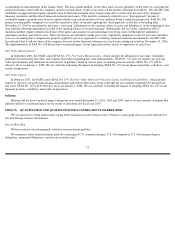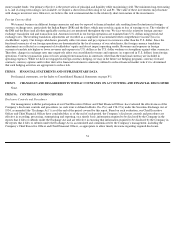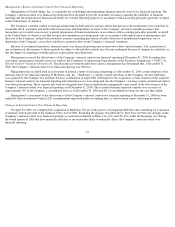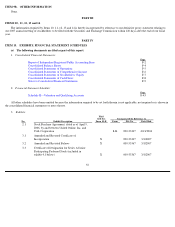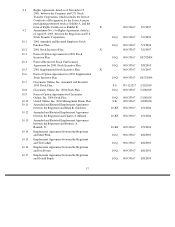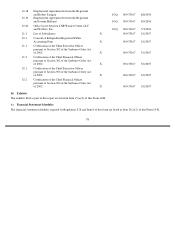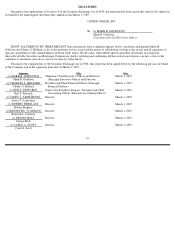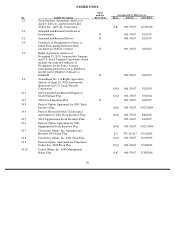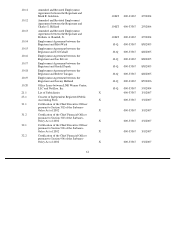Classmates.com 2006 Annual Report Download - page 52
Download and view the complete annual report
Please find page 52 of the 2006 Classmates.com annual report below. You can navigate through the pages in the report by either clicking on the pages listed below, or by using the keyword search tool below to find specific information within the annual report.
trends, significant declines in our stock price for a sustained period or significant underperformance relative to expected historical or projected
future results of operations.
The testing for a potential impairment of goodwill involves a two-step process. The first step of the impairment test involves comparing the
estimated fair values of our reporting units with their respective book values, including goodwill. If the estimated fair value exceeds book value,
goodwill is considered not to be impaired and no additional steps are necessary. If, however, the fair value of the reporting unit is less than book
value, then the carrying amount of the goodwill is compared with its implied fair value. The estimate of implied fair value of goodwill may
require independent valuations of certain internally generated and unrecognized intangible assets such as our pay account base, software and
technology and patents and trademarks. If the carrying amount of goodwill exceeds the implied fair value of that goodwill, an impairment loss
would be recognized in an amount equal to the excess.
Business Combinations— All of our acquisitions have been accounted for as purchase business combinations. Under the purchase method
of accounting, the cost, including transaction costs, is allocated to the underlying net assets, based on their respective estimated fair values. The
excess of the purchase price over the estimated fair values of the net assets acquired is recorded as goodwill.
The judgments made in determining the estimated fair value and expected useful lives assigned to each class of assets and liabilities
acquired can significantly impact net income. Consequently, to the extent an indefinite-lived or a longer-lived asset is ascribed greater value
under the purchase method than a shorter-lived asset, there may be less amortization recorded in a given period. Definite-lived identifiable
intangible assets are amortized on either a straight-line basis or an accelerated basis. We determine the appropriate amortization method by
performing an analysis of expected cash flows over the estimated useful life of the asset and matches the amortization expense to the expected
cash flows from those assets.
Determining the fair value of certain assets and liabilities acquired is subjective in nature and often involves the use of significant estimates
and assumptions. Two areas, in particular, that require significant judgment are estimating the fair value and related useful lives of identifiable
intangible assets. To assist in this process, we may obtain appraisals from valuation specialists for certain intangible assets. While there are a
number of different methods used in estimating the value of acquired intangibles, there are two approaches primarily used: the discounted cash
flow and market comparison approaches. Some of the more significant estimates and assumptions inherent in the two approaches include:
projected future cash flows (including timing); discount rate reflecting the risk inherent in the future cash flows; perpetual growth rate;
subscriber churn and terminal value; determination of appropriate market comparables; and the determination of whether a premium or a
discount should be applied to comparables. Most of the above assumptions are made based on available historical information.
Income Taxes— Income taxes are accounted for under SFAS No. 109, Accounting for Income Taxes . Under SFAS No. 109, deferred tax
assets and liabilities are determined based on differences between the financial reporting and tax basis of assets and liabilities and are measured
using the enacted tax rates and laws that will be in effect when the differences are expected to reverse. A valuation allowance is established when
necessary to reduce deferred tax assets to the amount expected to be realized.
The computation of limitations relating to the amount of such tax assets, and the determination of appropriate valuation allowances relating
to realizability of such assets, are inherently complex and require the exercise of judgment. As additional information becomes available, we
continually assess the carrying value of our net deferred tax assets.
51


